New Zealand literature is literature, both oral and written, produced by the people of New Zealand. It often deals with New Zealand themes, people or places, is written predominantly in New Zealand English, and features Māori culture and the use of the Māori language. Before the arrival and settlement of Europeans in New Zealand in the 19th century, Māori culture had a strong oral tradition. Early European settlers wrote about their experiences travelling and exploring New Zealand. The concept of a "New Zealand literature", as distinct from English literature, did not originate until the 20th century, when authors began exploring themes of landscape, isolation, and the emerging New Zealand national identity. Māori writers became more prominent in the latter half of the 20th century, and Māori language and culture have become an increasingly important part of New Zealand literature.

Tino rangatiratanga is a Māori language term that translates literally to 'highest chieftainship' or 'unqualified chieftainship', but is also translated as "self-determination", "sovereignty" and "absolute sovereignty". The very translation of tino rangatiratanga is important to New Zealand politics, as it is used in the Māori version of the Treaty of Waitangi to express "full exclusive and undisturbed possession" over Māori-owned lands and property, but different translations have drastically different implications for the relationship between the 1840 signatories: the British Crown and the Māori chiefs (rangatira).

Captain William Hobson was an Irish Royal Navy officer who served as the first Governor of New Zealand. He was a co-author of the Treaty of Waitangi.
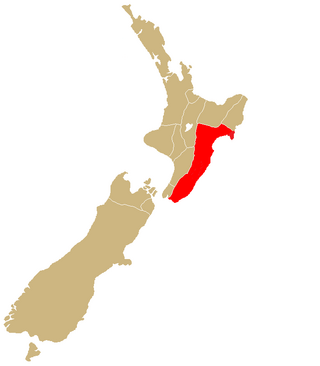
Ngāti Kahungunu is a Māori iwi located along the eastern coast of the North Island of New Zealand. The iwi is traditionally centred in the Hawke's Bay and Wairārapa regions. The Kahungungu iwi also comprises 86 hapū (sub-tribes) and 90 mārae.

Thomas Spencer Forsaith, JP, was a New Zealand politician and an Auckland draper. According to some historians, he was the country's second premier, although a more conventional view states that neither he nor his predecessor should properly be given that title.
The following lists events that happened during 1905 in New Zealand.

Te Ara: The Encyclopedia of New Zealand is an online encyclopedia established in 2001 by the New Zealand Government's Ministry for Culture and Heritage. The web-based content was developed in stages over the next several years; the first sections were published in 2005, and the last in 2014 marking its completion. Te Ara means "the pathway" in the Māori language, and contains over three million words in articles from over 450 authors. Over 30,000 images and video clips are included from thousands of contributors.

New Zealand is an island country in the southwestern Pacific Ocean. It consists of two main landmasses—the North Island and the South Island —and over 700 smaller islands. It is the sixth-largest island country by area, covering 268,021 square kilometres (103,500 sq mi). New Zealand is about 2,000 kilometres (1,200 mi) east of Australia across the Tasman Sea and 1,000 kilometres (600 mi) south of the islands of New Caledonia, Fiji, and Tonga. The country's varied topography and sharp mountain peaks, including the Southern Alps, owe much to tectonic uplift and volcanic eruptions. New Zealand's capital city is Wellington, and its most populous city is Auckland.

Dame Claudia Josepha Orange is a New Zealand historian best known for her 1987 book The Treaty of Waitangi, which won 'Book of the Year' at the Goodman Fielder Wattie Book Award in 1988.
The following lists events that happened during 1821 in New Zealand.
Sealing continues at Bass Strait but declines at Dusky Sound which is still used for provisioning. There is a new rush to the Antipodes Islands. The existence of Foveaux Strait is not reported in Port Jackson until early the following year so sealers are still travelling via the south of Stewart Island/Rakiura which some also visit. At Stewart Island/Rakiura, and its smaller surrounding islands, the sealers often encounter Māori which they have not done at all at Dusky Sound. As many as 16 whalers are operating around the north of New Zealand, occasionally visiting the Bay of Islands and taking an increasing number of Māori on board as crew.
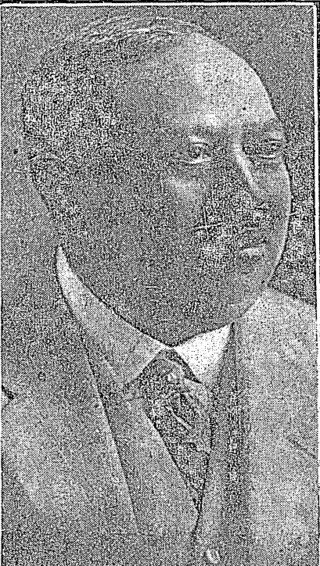
Taare Rakatauhake Parata, also known as Charles Rere Parata, was a Māori and a Liberal Party Member of Parliament in New Zealand.
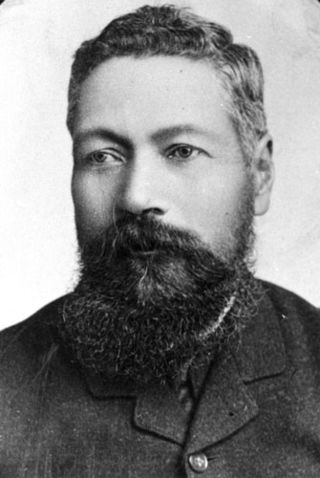
Tame Parata, also known as Thomas Pratt, was a Māori and a Liberal Party Member of Parliament in New Zealand.
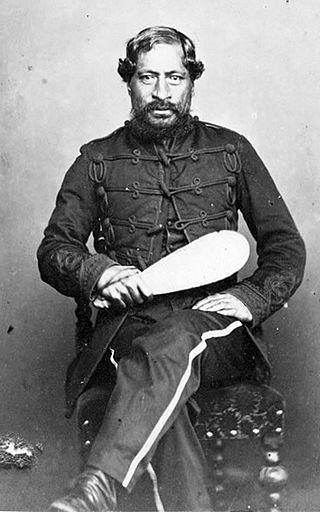
Mete Kīngi Te Rangi Paetahi was a Member of Parliament in New Zealand. He was one of four Māori elected in the first Māori elections of 1868 for the new Māori electorates in the House of Representatives.
Hirini Rawiri Taiwhanga, known as Sydney Taiwhanga, was a 19th-century Māori member of the House of Representatives.

Jane Williams, born Jane Nelson, was a pioneering educator in New Zealand. Together with her sister-in-law Marianne Williams she established schools for Māori children and adults. She also educated the children of the Church Missionary Society in the Bay of Islands, New Zealand.
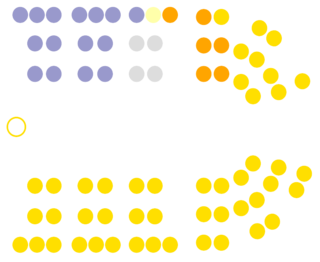
The 12th New Zealand Parliament was a term of the New Zealand Parliament. It was elected at the 1893 general election in November and December of that year.

The 16th New Zealand Parliament was a term of the New Zealand Parliament. It was elected at the 1905 general election in December of that year.

The Colony of New Zealand was a colony of the United Kingdom of Great Britain and Ireland that encompassed the islands of New Zealand from 1841 to 1907. The power of the British Government was vested in the governor of New Zealand. The colony had three capitals: Okiato in 1841; Auckland from 1841 to 1865; and Wellington, which was the capital until the colony's reorganisation into a Dominion, and continues to be the capital of New Zealand to the present day.

Charles Wilson Hursthouse, also known by his Māori name Wirihana, was an English-born New Zealand surveyor, public servant, politician, and soldier. He laid out part of the North Island Main Trunk railway through the King Country.














